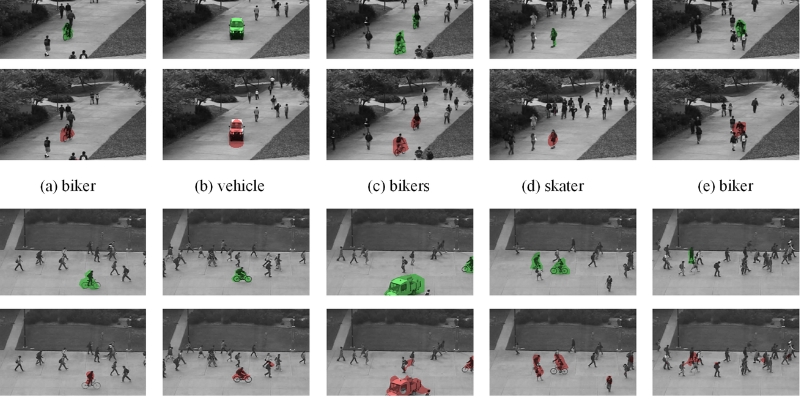Lucia Lee
Last update: 07/07/2025
As businesses face increasingly complex security challenges, surveillance is no longer just about recording what happened but about anticipating what could. This is where machine learning (ML) comes in, transforming how surveillance systems operate, moving them from passive observers to intelligent, adaptive solutions. But what does the future hold for this technology? In this post, we explore the key future trends in machine learning for surveillance that are shaping smarter, faster, and more proactive security strategies for modern organizations.
Machine learning is a core branch of artificial intelligence that empowers computers to learn from data and make decisions without being explicitly programmed for every task. Rather than following fixed instructions, ML systems identify patterns and relationships within large datasets, enabling them to improve performance through experience.
Before diving into the future trends in machine learning for surveillance, we first need to understand what machine learning has to do with surveillance systems. Below are its key role:
Real-time threat detection with real-time analytics
One of the most transformative applications of machine learning in surveillance is its ability to perform real-time analytics. Traditional security systems often rely on delayed reviews of recorded footage, which limits the ability to respond to immediate threats. In contrast, ML-powered surveillance systems can monitor, process, and analyze data as it streams in. This allows organizations to detect and address potential security incidents instantly - whether it’s identifying a suspicious individual, detecting unauthorized access, or spotting unusual movement in sensitive areas.
Pattern recognition and anomaly detection
Machine learning algorithms excel at recognizing patterns and identifying outliers. These systems can analyze historical data to learn what “normal” behavior looks like and then flag deviations as potential threats. This real-time video processing capability allows surveillance tools to detect behavior that human operators might miss, such as someone lingering in an unusual area or accessing a building at off-hours. Over time, the system continues to refine its understanding of what is typical and what is not, making anomaly detection increasingly accurate.

Pattern recognition and anomaly detection
Automated and proactive security responses
Beyond detection, ML enables autonomous systems that can respond without human intervention. Once a threat is detected, the system can trigger predefined actions like sending alerts to security teams, locking down access points, or activating alarms. This automation is especially critical in high-risk environments like airports or data centers, where response time matters more than anything else. These systems can even escalate alerts based on severity, ensuring that human attention is focused on the most pressing threats.
Predictive security and threat forecasting
Machine learning empowers surveillance systems with predictive capabilities. By analyzing past incidents and identifying trends, ML models can forecast potential future threats. For example, if a certain pattern of behavior historically led to a breach or theft, the system can raise red flags when similar behavior is detected again. This use of predictive analysis turns surveillance into a forward-looking function - one that helps prevent incidents before they occur.
Also read: What Is Machine Learning Forecasting? A Comprehensive Guide
Smart access control and user authentication
Another critical use of machine learning is in strengthening access control systems. By studying user behavior patterns - such as login times, access locations, and movement through a facility - ML algorithms can flag unusual activities, like an employee accessing a restricted area or logging in from an unfamiliar device. This proactive authentication support helps reduce insider threats and ensures only authorized personnel can access sensitive systems or areas.

Smart access control and user authentication
Scalable malware detection capabilities
Machine learning has also improved how surveillance systems detect and respond to cyber threats. Unlike traditional antivirus tools that rely on known signatures, ML models analyze the behavior and structure of files to detect malicious intent, even in new or evolving malware. This proactive approach ensures security systems can detect threats that haven’t been seen before, which is essential for businesses dealing with increasingly sophisticated cyberattacks.
Enhanced incident response efficiency
Finally, ML boosts the effectiveness of security teams by optimizing incident response. By analyzing past incident data, machine learning systems can suggest appropriate responses based on what has worked in similar cases. This not only speeds up resolution times but also reduces human error during stressful security events. Over time, the system learns which responses yield the best results, continuously improving its recommendations and contributing to a more resilient security strategy.
Also read: How Machine Learning Powers Smart CCTV: The Ultimate Guide
As threats grow more sophisticated and data volumes surge, businesses must look beyond traditional surveillance methods. Machine learning is rapidly reshaping the security landscape, bringing powerful, predictive capabilities that make systems not only smarter but also faster and more autonomous. As technology evolves, below are the key future trends in machine learning for surveillance to look forward to:
Predictive threat detection and anomaly monitoring
Machine learning is leading a shift from reactive to proactive surveillance. With predictive analytics, systems can detect potential threats before they escalate by analyzing behavioral data, identifying anomalies, and learning from patterns. This future of behavior recognition in CCTV enables surveillance to evolve from passive monitoring to anticipatory action, reducing response times and improving overall safety.
Adaptive and self-learning security models
The next-generation security systems will be built on adaptive machine learning models that constantly retrain themselves in response to new threat patterns. These models support dynamic threat response by automatically adjusting detection thresholds, updating defense mechanisms, and applying new countermeasures - all without human input. This adaptability ensures the system remains effective even in the face of fast-evolving attack methods.
Rise of edge AI for real-time surveillance
One of the most impactful developments is the emergence of Edge AI, which allows surveillance systems to process data directly on local devices rather than relying on cloud computing. These edge AI trends in smart CCTV improve latency, increase reliability, and preserve data privacy by minimizing external data transfers. Edge AI is particularly valuable in remote or bandwidth-limited environments like industrial sites and transportation hubs.

Rise of edge AI for real-time surveillance
Federated learning for privacy-focused surveillance
As privacy concerns in AI surveillance become more critical, federated learning is gaining ground as one of the key future trends in machine learning for surveillance. This technique allows devices to collaboratively learn from decentralized data without transferring it to a central server. The result? Enhanced security analytics with reduced privacy risks, making it ideal for sensitive sectors like healthcare, finance, and smart city security solutions. Another good thing about federated models is that they keep data local while still enabling robust threat detection.
Autonomous threat detection and incident response
Automation is set to transform how surveillance systems respond to threats. Using machine learning and AI, next-generation security systems can autonomously detect suspicious activity, classify threats, and launch immediate countermeasures. This is especially important for zero-day threats or Advanced Persistent Threats (APTs), where speed is critical. As reinforcement learning is further integrated, these autonomous systems will only become more sophisticated and adaptable.
AI ethics and adversarial threat preparedness
As surveillance systems become more powerful, the importance of AI ethics in surveillance and ethical AI in security monitoring cannot be overstated. Organizations must ensure that AI models are transparent, fair, and resistant to manipulation.
Adversarial AI - where attackers intentionally deceive models - also presents a growing threat. To combat this, future systems will need to incorporate robust defenses like adversarial training, explainable AI, and ethical review frameworks.
Real-time threat intelligence sharing
AI is accelerating collaborative security through real-time data exchange. Surveillance systems powered by machine learning can analyze threat information and share it across a network of organizations or government bodies. This collective intelligence strengthens defense capabilities across industries, leading to faster identification of widespread attack patterns and reducing the window of vulnerability.
AI-powered cyber resilience and self-healing networks
Another trend among the key future trends in machine learning for surveillance is self-healing capabilities. These systems can autonomously detect vulnerabilities, implement patches, and recover from breaches without human intervention. In critical infrastructure - where downtime is simply not an option - self-healing networks powered by AI will play a central role in ensuring operational continuity and long-term security.
While the future trends in machine learning for surveillance are promising, there are also a range of complex challenges coming with it. Below are the key issues organizations must address to implement ML-based surveillance responsibly and effectively.
Privacy invasion
Machine learning enables surveillance systems to analyze video feeds continuously, identifying patterns and behaviors in real time. While this enhances security, it also raises serious privacy concerns. The ability to track individuals across multiple locations or analyze facial expressions and movements can lead to intrusive monitoring - especially in workplaces, public spaces, or private areas. Without strict governance, ML-based surveillance risks crossing ethical lines and eroding public trust.
Data security risks
ML-driven surveillance systems are just as good as the data they are fed with. They depend on vast amounts of video and behavioral data for training and ongoing analysis. Storing and processing this data, however, introduces significant security risks - especially if these systems operate in cloud environments. If breached, sensitive footage or behavioral profiles could be exposed, leading to reputational damage or legal liabilities. Securing these systems requires robust encryption, access controls, and constant monitoring to prevent exploitation.

Data security risks
Also read: 11 Data Security Solutions To Safeguard Your Critical Data
Over-reliance on automation
While machine learning enhances automation, excessive reliance on it can reduce critical human oversight. Surveillance systems might misclassify complex or context-sensitive situations - such as emotional distress or cultural behavior - as threats simply because they fall outside trained patterns. Depending solely on ML can lead to blind spots and false assumptions, especially when systems aren’t regularly updated with new contextual data.
Ethical concerns with continuous monitoring
Machine learning enables persistent observation and behavior analysis over time, often without individuals' explicit awareness. This continuous tracking - especially when combined with pattern recognition and behavioral predictions - raises ethical questions about consent, autonomy, and fairness. In environments like offices or schools, ML-based surveillance can create a sense of constant scrutiny that negatively affects morale and trust.
Also read: Smart CCTV for Hospitals: Enhancing security and patient care
Lack of clear regulations
The deployment of machine learning in surveillance often outpaces the development of laws and policies governing its use. Without defined regulations, organizations may adopt invasive surveillance practices with little accountability. This regulatory lag makes it difficult to establish standards for data retention, consent, usage limits, or redress mechanisms in case of misuse.
Algorithmic bias and discrimination
Machine learning models are only as fair as the data they’re trained on. If surveillance datasets are skewed - by region, demographic, or behavior - the model may unfairly flag or ignore certain individuals or groups. This can lead to biased threat detection, false positives, and discriminatory enforcement actions, particularly in public safety or law enforcement applications.
High implementation costs
Developing and deploying ML-based surveillance solutions is often resource-intensive. It requires significant investment in computing infrastructure, large annotated datasets, and skilled personnel to train and maintain the models. As a result, access to these technologies is often limited to well-funded organizations, widening the gap in security capabilities between large corporations and smaller entities or institutions.
As surveillance technology rapidly evolves, machine learning is emerging as the backbone of smarter, faster, and more adaptive security systems. From real-time analytics and behavioral anomaly detection to edge AI and autonomous threat response, the future trends in machine learning for surveillance suggest a safer and more secure environment for businesses.
For businesses, staying ahead means more than just deploying cameras; it means leveraging data-driven systems that can anticipate risks, adapt to threats, and operate proactively. But implementing these technologies requires deep expertise and reliable solutions tailored to your environment.
Sky Solution specializes in machine learning-powered surveillance systems designed to meet today’s demands and tomorrow’s challenges. Whether you’re looking to modernize your current infrastructure or build a future-ready security strategy, our smart surveillance solutions offer the efficiency, accuracy, and scalability your organization needs to stay protected. Contact us now for a free consultation!